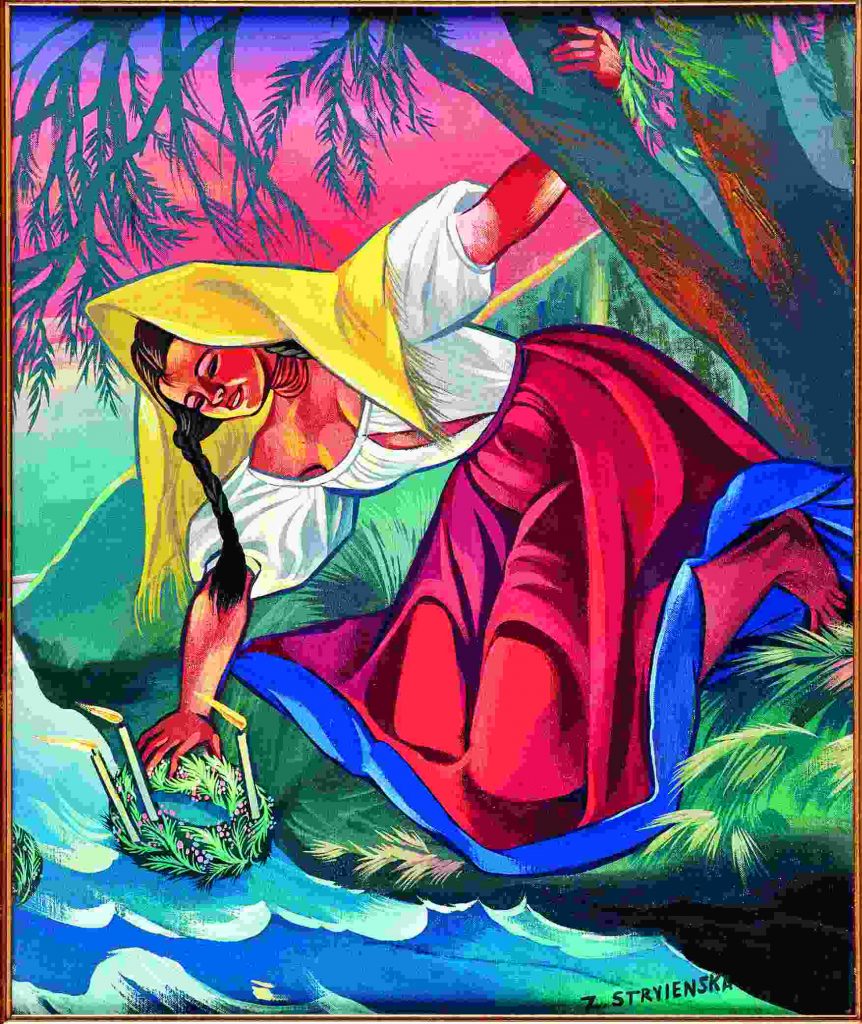
Fotografia Dariusza Kobylańskiego przedstawiająca obraz Zofii Stryjeńskiej. Obraz znajduje się w kolekcji Muzeum Okręgowego w Tarnowie: https://tiny.pl/9hpbx
Have you ever heard about Kupala Night and Midsummer Night?
And do you know these are two different festivals?
Our Slavic ancestors celebrated Kupala night, also called Kupalnocka or Sobótka. It was strictly connected with Summer Solstice which is on the shortest night of the year – June 21/22. Slavic people believed in its magic powers that were to bring love and vitality. This night was accompanied by many rites connected with fire, herbs or known till this day floating wreaths.
Midsummer Night (pol. Noc Świętojańska – literally “St John’s Night”) established its presence in Polish calendar together with Christianization. We celebrate it on June 23, so on the Eve of John’s name day.
This festival is in honor of St John the Baptist. Kupalnocka is sometimes mistaken with Midsummer Night. That is because some ancient traditions are still with us today. Floating wreaths of flowers by young girls is an example of our Pagan ancestors’ legacy.
Józef Szczypka in “Polish Calendar” wrote about Midsummer Night: “(…) it was the most joyful night of the year. It clearly forced its way from the fogs of prehistory, from the mysterious forest times, from the world of other faiths, beliefs and imaginations in order to still, already in Christian times, lure us into its semi-comprehensible magic, into its joy under the high June sky. Older than the history of Poland, it never lost its youthful vitality and carefree follies. St John Baptist, the patron assigned to it as a legacy of past cults, perhaps often reflected upon its persistence and helplessly spread his hands when the sounds of Kupalnocka joy reached him!”
And do you celebrate Kupalnocka or Midsummer Night? Are there any special traditions in your regions?

